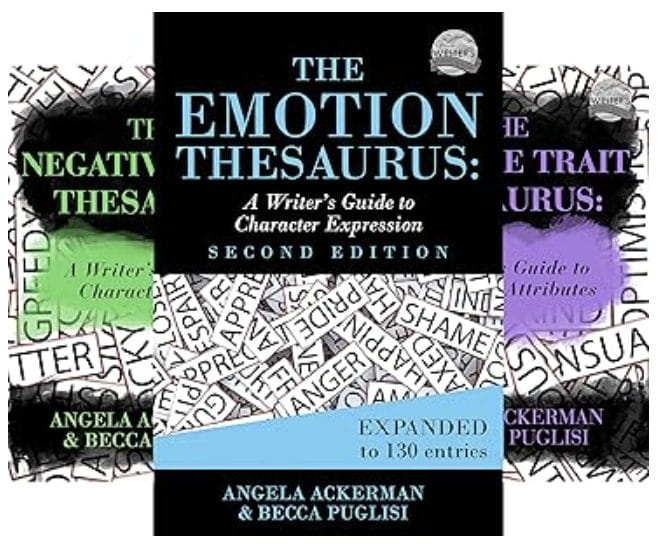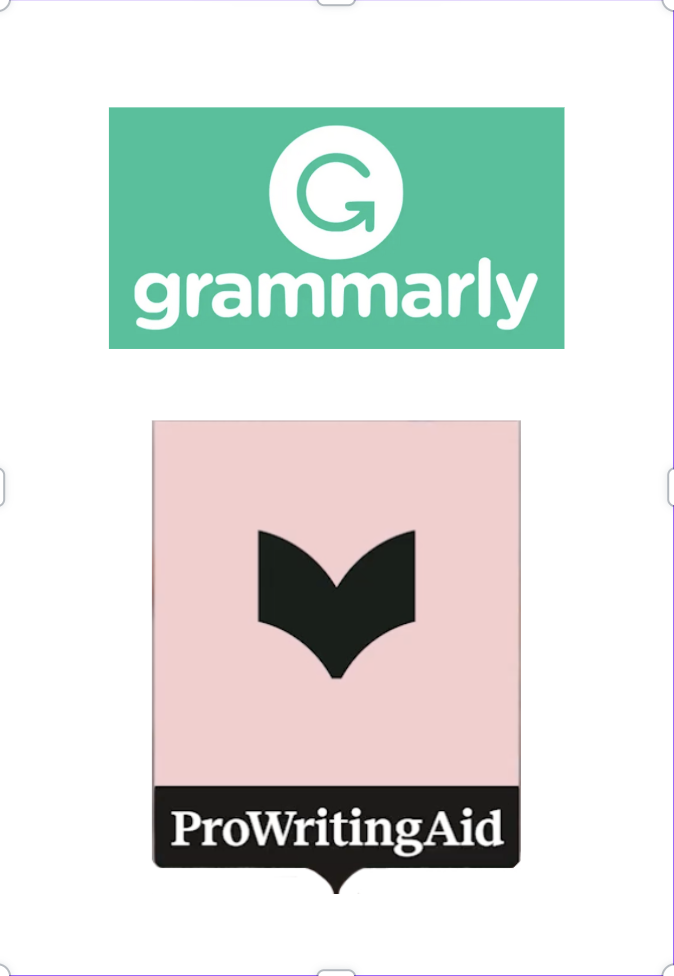Structure
Story blueprints, beat sheets, and frameworks to help you build books readers can’t put down.
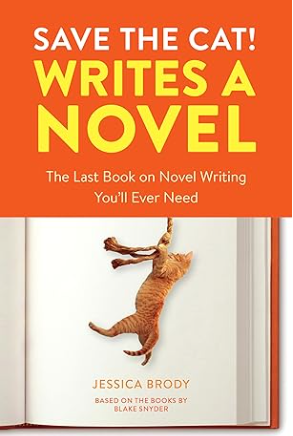
Save the Cat! Writes a Novel by Jessica Brody
A practical, story-structure guide that adapts Blake Snyder’s famous screenwriting method for novelists. It walks you through the fifteen “beats” that shape a compelling story and shows how to map them to your own book, no matter the genre.
Why we love it:
Jessica Brody takes the mystery out of pacing and plot. Her examples from bestselling novels make the structure click instantly, and her tone feels like a writing coach cheering you on. It’s one of the easiest ways to diagnose what’s not working in your draft and fix it fast.
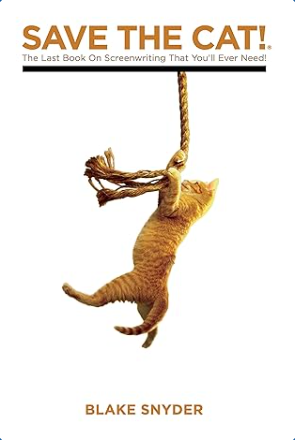
Save the Cat! Writes a Novel by Blake Snyder
Originally written for screenwriters, this storytelling classic lays out the foundation of modern story structure. Snyder introduces the famous “beat sheet,” a fifteen-step outline that helps you plot stories that grab attention, build emotion, and deliver satisfying payoffs. It’s a fast, funny read that makes complex structure feel like common sense.
Why we love it:
Even though it started in Hollywood, Save the Cat! has become a favorite for novelists too. Snyder’s approach demystifies pacing and plot turns, giving writers a repeatable framework they can adapt to any genre. It’s the perfect mix of craft and practicality—and it’s just plain fun to read.
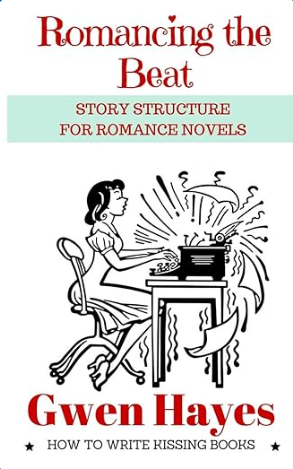
Romancing the Beat by Gwen Hayes
A fan-favorite guide that breaks down how romance stories actually work beneath all the swoon. Hayes shows how to map your story using the emotional “beats” that make readers fall in love right along with your characters. It’s short, funny, and laser-focused on the romance genre—no fluff, no filler.
Why we love it:
This book takes the mystery out of writing believable romantic arcs. Gwen makes structure feel intuitive instead of mechanical, and her examples make you want to get back to your own draft immediately. It’s the go-to guide for anyone writing love stories that readers truly feel.
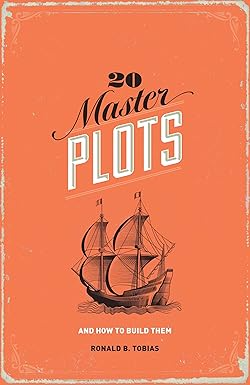
20 Master Plots (And How to Build Them) by Ronald B. Tobias
A deep dive into the classic story structures that have shaped fiction for centuries. Tobias breaks down twenty foundational plot types—from quests and revenge stories to transformations and love tales—showing what makes each one work and how to adapt them for your own writing. It’s both practical and analytical, helping writers see the patterns that give stories their power.
Why we love it:
This book is a goldmine for writers who want to strengthen their storytelling instincts. It helps you understand why certain stories resonate, not just how to outline them. The examples are clear, the analysis is sharp, and it gives you endless ideas for shaping your own plots with confidence and creativity.
Craft
Guidance on writing with heart, clarity, and voice — the art behind the words.
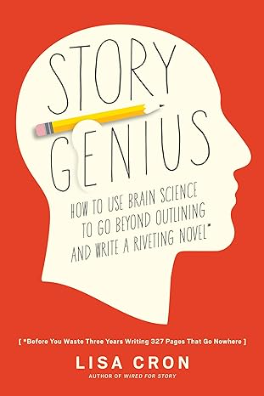
Story Genius, How to Use Brain Science to Go Beyond Outlining and Write a Riveting Novel by Lisa Cron
A powerful deep-dive into the psychology of storytelling, Story Genius shows writers how to craft stories that engage readers on an emotional level. Instead of focusing on plot first, Lisa Cron helps you build from the inside out, starting with your protagonist’s inner struggle and the “why” behind their every decision. It’s part neuroscience, part craft guide, and all about creating stories that truly mean something.
Why we love it:
Lisa Cron flips the usual writing advice on its head. She reminds us that great stories don’t start with flashy ideas or clever twists, but with flawed, fascinating humans. Her approach helps you write fiction that feels alive, where every scene matters because it ties back to what your character believes about themselves and the world. It’s one of those books that changes how you see both writing and reading forever.
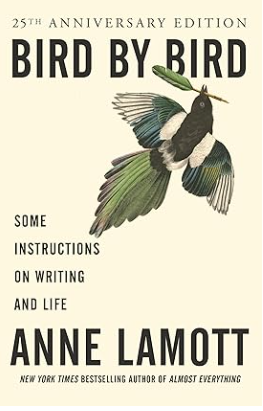
Bird by Bird by Ann Lamott
A classic in the writing world, Bird by Bird is part craft book and part pep talk. Anne Lamott offers honest, funny, and deeply human reflections on the writing life. She covers everything from getting started and silencing your inner critic to finding your own truth on the page. The title comes from her father’s advice to her brother, who once panicked over a school report on birds: “Just take it bird by bird.” It’s a book about writing, but also about life and how to face both with courage and humor.
Why we love it:
Lamott’s voice feels like that of a wise, hilarious friend who has been exactly where you are. Her advice is practical without ever feeling preachy, and her stories remind you that every writer struggles. Bird by Bird gives permission to write badly, start small, and trust the process. It is one of those rare books that makes you laugh, cry, and quietly believe you might actually be a writer after all.
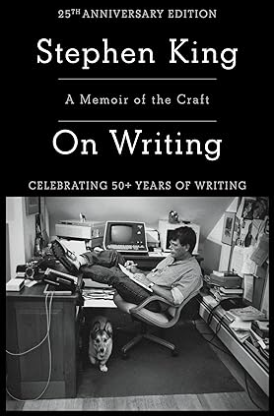
On Writing: A Memoir of the Craft by Stephen King
Part memoir, part masterclass, On Writing is Stephen King’s honest, funny, and surprisingly down-to-earth look at what it really takes to make a life in words. He shares stories from his own journey, lessons learned from decades at the desk, and clear, practical tips that work for writers at any stage.
Why we love it:
King makes writing feel both sacred and accessible. His advice is simple but sharp, rooted in discipline and love for the craft. You come away feeling like you’ve just had a conversation with someone who truly gets it—someone who reminds you that writing well is mostly about showing up, paying attention, and keeping faith in the story.
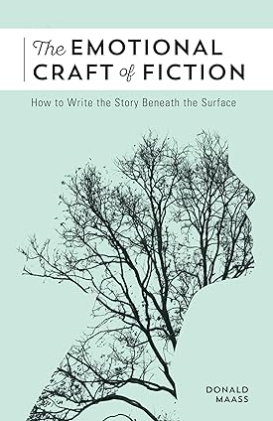
The Emotional Craft of Fiction by Donald Maass
A thoughtful guide to creating stories that don’t just entertain but resonate deeply. Donald Maass explores how to move readers beyond interest into genuine emotional investment. He breaks down how to evoke empathy, tension, and catharsis by shaping story moments that feel true and human.
Why we love it:
This book reminds you that the best stories are not just about what happens, but how it feels when it happens. Maass writes like a mentor who has seen every kind of story and still believes in their power. It teaches you how to write with intention and emotion so your readers don’t just follow your story, they feel it.
Publishing
Resources that help you navigate editing, formatting, and bringing your finished book to life.
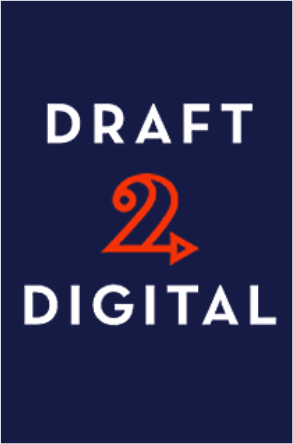
Draft 2 Digital
Draft2Digital is a simple, author-first publishing platform that helps indie writers distribute their eBooks and print books to major retailers around the world. It handles formatting, distribution, and royalty tracking so authors can focus on writing. With automated tools and a clean interface, it’s one of the most intuitive ways to publish wide without stress.
Why we love it:
Draft2Digital takes the overwhelm out of self-publishing. Their formatting tool is free and beautiful, their dashboard is clear, and their customer support actually feels human. Whether you’re launching your first book or managing a series, they make it easy to get your work everywhere readers buy books—and to look professional doing it.
Tools
Platforms, programs, and courses that make the writing and publishing journey easier.
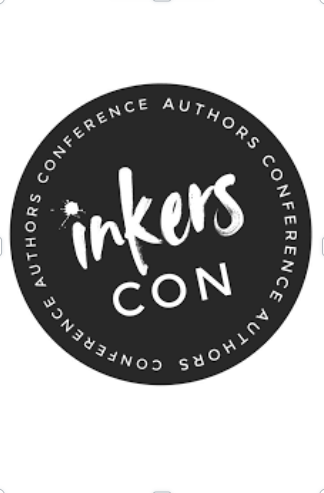
Inkers Con
Inkers Con is a professional conference and online learning hub for authors who want to grow their craft and their careers. It offers workshops on writing, publishing, marketing, and mindset, all taught by bestselling authors and industry experts. Whether you attend in person or join online, the experience is designed to inspire and educate at every stage of the writing journey.
Why we love it:
Inkers Con feels like a masterclass and a community rolled into one. The sessions are high quality and packed with insight, and the speakers genuinely care about helping authors succeed. It’s one of the few places where creative inspiration meets real-world publishing strategy, leaving writers motivated, informed, and ready to take their next step.
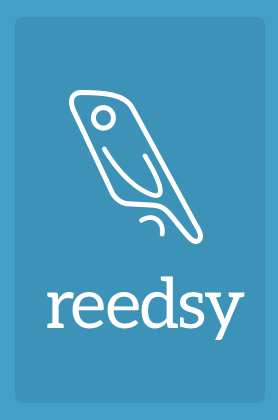
Reedsy
A professional hub for authors offering everything from vetted editors and book designers to learning courses and marketing guides. It’s a one-stop shop for indie writers who want to take their publishing journey seriously without losing creative control.
Why we love it:
Reedsy combines quality and community. The platform connects writers with trusted professionals, but it also teaches you how to think like a publisher. Their blog and YouTube channel are full of clear, friendly advice that makes every step of the process feel doable.
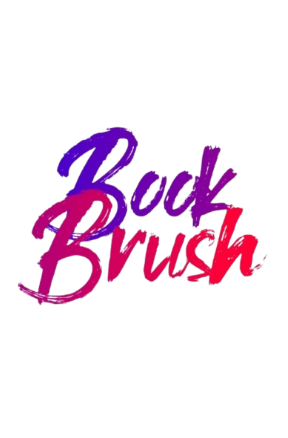
Book Brush
Book Brush is an easy-to-use design tool built specifically for authors. It lets you create book ads, 3D mockups, social media graphics, and promotional images without needing advanced design skills. Everything is drag-and-drop, with templates made for book marketing, author branding, and launch campaigns.
Why we love it:
It saves time and makes authors look like pros. You can turn a cover into a beautiful ad in minutes, resize graphics for any platform, and keep your branding consistent across everything you post. For indie authors who don’t want to wrestle with complicated design software, Book Brush is a total game changer.
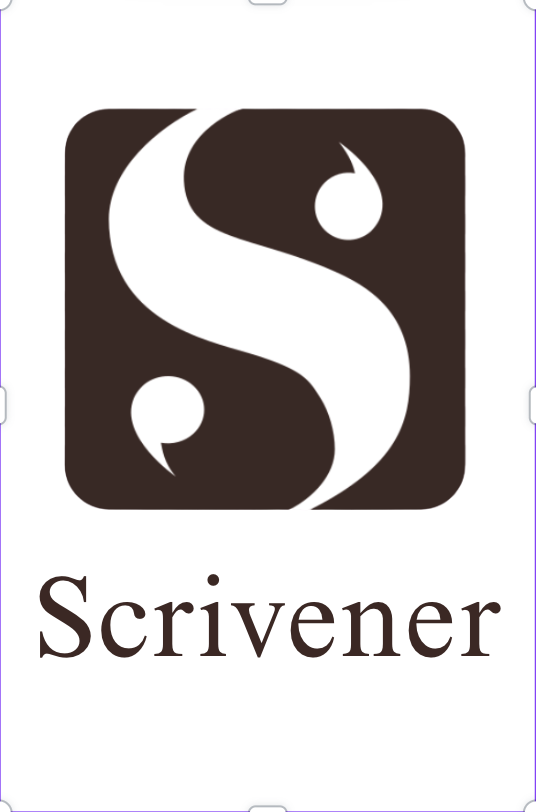
Scrivener (Literature & Latte)
Scrivener is a powerhouse writing app designed specifically for authors. It lets you organize drafts, notes, research, and outlines all in one place, with flexible tools that adapt to your writing style. Whether you’re plotting a novel, structuring a nonfiction book, or juggling multiple projects, Scrivener keeps everything tidy and easy to navigate.
Why we love it:
It feels like having a digital writing studio built around how writers actually think. You can jump between chapters, rearrange scenes, or store snippets of dialogue without losing focus. Scrivener makes big projects feel manageable, and once you get comfortable with its layout, it becomes one of those tools you can’t imagine writing without.
Voices
Creators, teachers, and authors who share honest advice and inspiration for writers.
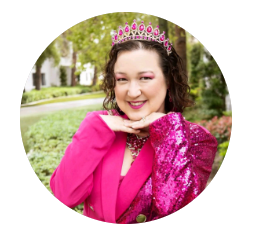
Golden Angle
Golden Angel is a prolific romance author who writes immersive, trope-twisting love stories with emotional depth and heat. She also shares her journey and guides newer authors through consultations and creator content (YouTube, Patreon, interviews), offering a peek behind the curtain of what it really takes to build a writing career.
Why we love it:
She brings heart and honesty to the romance world. Beyond writing bestselling books, she’s open about her process, her challenges, and her wins, and that kind of transparency is rare. Whether you read her stories for escape or follow her for craft insight, Golden Angel gives writers both inspiration and real-world encouragement.

Lauren Kay
Lauren Kay is a YA author turned author-coach who uses her debut success and 8-agent offer story to teach writers how to navigate publishing with confidence. On her website and across platforms she offers free tools, workshops, and behind-the-scenes advice that help writers craft their novels, build platforms, and move toward publication.
Why we love it:
She brings clarity and encouragement in equal measure. Lauren’s resources feel like a warmly lit writing workshop rather than a gimmick. Whether you’re just starting a draft or querying agents, her insights are honest, actionable, and supportive. She reminds new writers that publishing doesn’t have to be opaque — it can be guided, intentional, and full of possibility.

Danielle Valentine
(Pen name of Danielle Vega) writes gripping thriller and horror-tinged novels for teens and adults. Her work includes How to Survive Your Murder, Delicate Condition, and Two Sides to Every Murder. She also shares her author journey through social media and creator channels, giving insight into writing, publishing, and storytelling in suspense.
Why we love it:
Her TikTok videos are a masterclass in story craft and honesty. She breaks down complex writing ideas in clear, practical ways, mixing industry insight with the kind of encouragement every writer needs to hear. Danielle’s advice feels like a conversation with a mentor who genuinely wants you to succeed, and her energy makes the hard parts of writing feel possible again.
We’ve gathered a few quick answers about how we choose the tools and guides featured here, and how you can share your own favorites with us.
Q: What kinds of resources are listed here?
A: You’ll find trusted tools, books, and websites to help with every part of the writing process — from drafting and editing to formatting and publishing. Each one was chosen because it truly makes a writer’s life easier.
Q: Can I suggest a tool or book to add?
A: Definitely! We love hearing what’s helped other writers. Visit our Contact page and let us know your favorite — we’re always updating this list.
Q: Are these resources beginner-friendly?
A: Yes. Most of them are perfect for writers just starting out, while others offer deeper insights for those with more experience.

